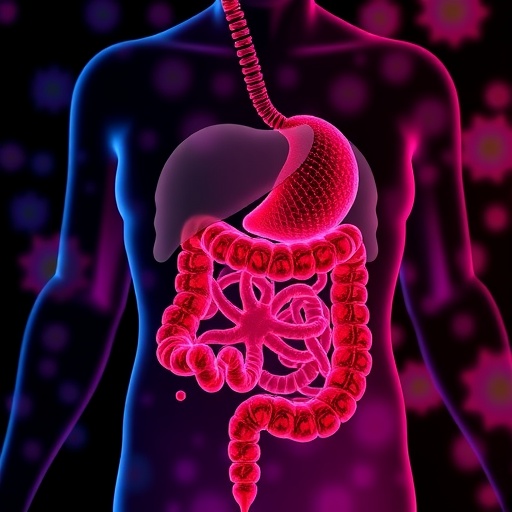
Cornelia de Lange syndrome (CdLS) is a complex multisystem genetic disorder renowned for its distinctive craniofacial abnormalities and a broad spectrum of developmental challenges. Characterized by hallmark features such as synophrys (fused eyebrows), a short and upturned nose, microcephaly, growth retardation, cognitive impairments, and limb malformations, CdLS poses significant diagnostic and therapeutic challenges. Despite the identification of mutations in seven genes linked to CdLS, the majority of existing research has concentrated on Western populations, leaving a significant knowledge gap concerning its clinical and genetic manifestations in Asian cohorts, particularly the Chinese pediatric population.
Addressing this crucial void, a groundbreaking study led by Professor Chunxiu Gong at the National Center for Health in Beijing, China, has meticulously investigated the phenotypic and genotypic landscape of CdLS in 19 Chinese children. Published recently in the journal Pediatric Investigation, this experimental study employed whole-exome sequencing (WES) to unravel the molecular underpinnings of the syndrome, providing unprecedented insights into the disease’s intricate genetic architecture within this understudied demographic.
Whole-exome sequencing focuses on decoding the protein-coding regions of the genome—the exomes—which encompass the vast majority of disease-causing mutations. By extracting genomic DNA from the blood samples of these pediatric patients, the research team embarked on a detailed exploration of mutational spectra, revealing a total of 19 mutations distributed across three key genes associated with CdLS. The dominant majority, 15 mutations, were localized within the NIPBL gene, a critical regulator of development whose protein product, delangin, orchestrates cohesin loading onto chromosomes—a process vital for proper gene expression and chromosomal segregation.
The mutational types identified in NIPBL were diverse, including missense mutations causing amino acid substitutions, nonsense mutations leading to premature protein truncation, frameshift mutations resulting in altered protein sequences, and splicing variants which disrupt mRNA processing. Notably, the study also uncovered novel variants in SMC1A and RAD21, genes pivotal for chromosome cohesion and cell division, respectively. Two new variants in SMC1A—a missense mutation and a splicing variant—and two in RAD21, including a frameshift mutation and a deletion, highlight the genetic heterogeneity of CdLS and expand our understanding of its molecular etiology.
Clinically, the study employed a standardized scoring system to categorize disease phenotypes, distinguishing 12 children with classical forms of CdLS. Among the cohort, global developmental delays were prevalent, affecting 16 patients, while prenatal growth retardation and short stature were observed in 14 individuals. Craniofacial anomalies emerged as the most frequent clinical feature, particularly a short nose with an upturned tip, microcephaly, and limb anomalies such as small hands and feet. Less common manifestations included cutaneous aberrations and auditory impairments, illustrating the variable expressivity of the syndrome.
Importantly, the researchers delved into genotype-phenotype correlations, a critical endeavor for prognostication and personalized medicine. They identified that NIPBL null variants—mutations resulting in complete loss of function, encompassing nonsense, frameshift, and large deletions—were strongly associated with more severe phenotypes, notably impaired growth trajectories and microcephaly. This correlation underscores the pivotal role of NIPBL’s functional integrity in normal development and suggests a genetic basis for clinical severity stratification within CdLS.
Beyond diagnosis, the study ventured into therapeutic considerations by analyzing the outcomes of recombinant human growth hormone (rh-GH) therapy in three patients whose guardians elected for treatment. Rh-GH, a bioengineered analog designed to augment endogenous growth hormone activity, was administered to address growth deficits. The outcomes varied: one female patient treated from age five experienced an 8 cm height increase but discontinued therapy due to perceived inefficacy; a male patient commencing rh-GH at 10 years exhibited a substantial 12 cm height gain and continues therapy; and another female patient, treated from age seven, gained 10 cm but halted treatment after one year owing to disproportionate enlargement of hands and feet, highlighting the complexity of balancing therapeutic benefits with adverse effects.
Lead author Xiaoqiao Li emphasized the importance of individualized treatment plans and vigilant monitoring of rh-GH therapy, noting that while it offers promise, its application must be carefully tailored to each patient’s unique clinical context. These findings not only demonstrate the potential for hormonal intervention in CdLS-associated growth failure but also caution against a one-size-fits-all approach, advocating for precision medicine principles in managing rare genetic disorders.
The comprehensive characterization of CdLS clinical features and its mutational spectrum within the Chinese pediatric population has profound implications for diagnosis, management, and future research. Given the syndrome’s rarity and phenotypic variability, underdiagnosis and misrecognition of milder forms have impeded accurate prevalence estimates. This study’s detailed documentation furnishes clinicians with refined diagnostic criteria pertinent to Chinese patients, bolstering the accuracy of clinical assessments and genetic counseling endeavors.
Moreover, the expanded catalog of novel genetic variants enriches mutation databases, facilitating more robust molecular diagnostics and fostering further investigations into the biological pathways disrupted in CdLS. The identification of critical genotype-phenotype associations lays the groundwork for stratifying patients according to risk and tailoring interventions to mitigate developmental impairments and improve quality of life.
Looking ahead, this research serves as a cornerstone for epidemiological studies on CdLS within China, essential for unveiling disease burden and shaping public health strategies. Additionally, it underscores the value of integrating genomic technologies such as whole-exome sequencing into routine clinical evaluations of complex syndromes, enabling earlier and more precise diagnoses that pave the way for targeted therapies.
In summary, Professor Gong and colleagues have illuminated the intricate clinical and genetic contours of Cornelia de Lange syndrome in Chinese children, providing a vital resource for clinicians and researchers alike. Their findings highlight both the opportunities and challenges inherent in managing this multifaceted disorder and emphasize the critical need for culturally and genetically tailored approaches in pediatric genetics. As genomic medicine continues to evolve, such studies exemplify the transformative potential of combining cutting-edge molecular tools with rigorous clinical evaluation to unravel rare diseases and improve patient outcomes worldwide.
Subject of Research: People
Article Title: Clinical and genetic characteristics of Cornelia de Lange syndrome in pediatric patients
News Publication Date: 2-Jul-2025
References: DOI: 10.1002/ped4.70013
Image Credits: Xiaoqiao Li
Keywords: Genetics, Pediatrics, Developmental disorders, Endocrinology, Molecular biology, Epidemiology, Medical diagnosis, Developmental biology, Hormone therapy
Tags: Asian cohorts genetic researchChinese pediatric population studyCornelia de Lange syndromecraniofacial abnormalities researchdevelopmental challenges in CdLSdiagnostic challenges in genetic disordersgenetic disorder in childrengenotypic landscape of CdLSPediatric Investigation journal publicationphenotypic features of CdLSProfessor Chunxiu Gong studywhole-exome sequencing in genetics




